DMM Aneng AN101
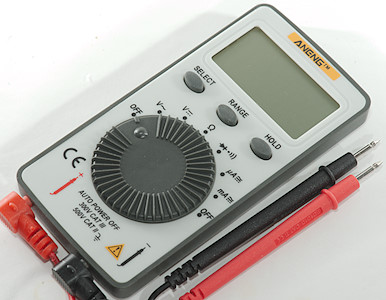
This is a fairly cheap pocket DMM with most functions.
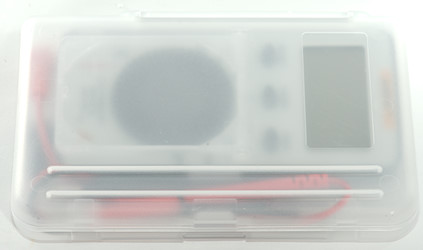
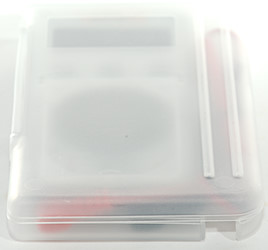
The DMM comes with its own box.

The probes are rather small, here it is besides a normal sized probe.
They are marked 400V 200mA, CATII, i.e. lower CAT rating than the meter.
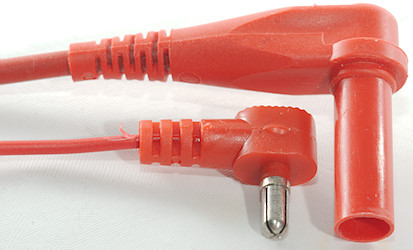
The plugs are not shrouded and considerable smaller than standard probes.
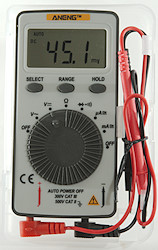

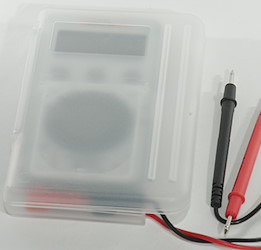
The box has a few tricks, it can be used as a stand or it can protect the meter from splashes
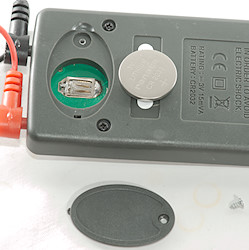
The meter uses a CR2032 battery.
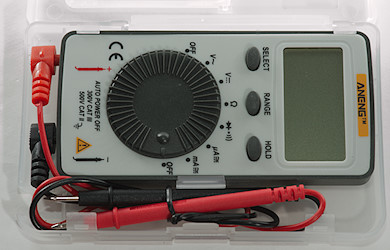

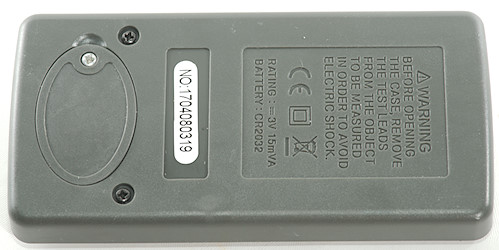
Display
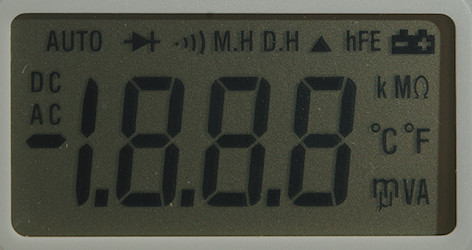
All segments on the display.
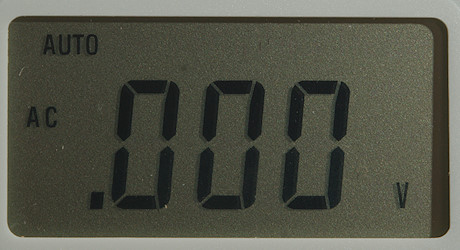
Typical display during usage, it will show the number and selected measurement.
Functions
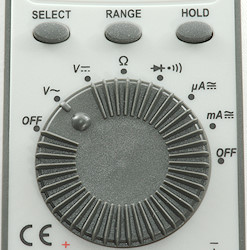
Buttons:
- Select: Select between diode and continuity and select AC in current ranges.
- Range: Manual range, hold down for returning to auto.
- Hold: Freeze the display
Rotary switch:
- Off: Meter is turned off
- VAC: AC voltage ranges (mV must be manually selected).
- VDC: DC voltage ranges.
 : Resistance range
: Resistance range
 : Diode and Continuity.
: Diode and Continuity.
- uA: microampere
- mA: milliampere
- Off: Another position that will turn the meter off
Input
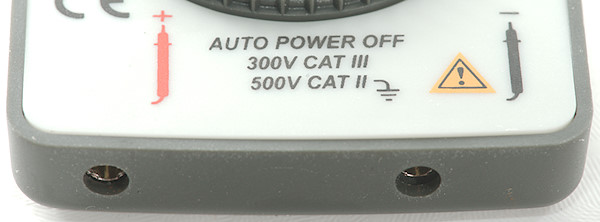
- Red: The positive terminal for all ranges.
- Black: The negative terminal for all ranges.
This meter has shared voltage and current input and without a fuse this is usual a bad idea. The meter has a PTC to protect the current ranges.
Measurements
- Volt and frequency
- 1V AC volt readings drops 5% at about 2.4kHz
- Input impedance is 10Mohm to 11Mohm
- mV DC is high impedance up to 1.5V then it drops to 10Mohm.
- Rated voltage is 600V DC/AC rms
- Current
- uA and mA range is unfused, but protected by PTC.
- uA and mA range will sound a buzzer when overloaded
- Ohm, continuity, diode and capacitance
- Ohm needs about 3.2s to measure 100ohm (It will show 10ohm before 100ohm).
- Ohm voltage is 0.4V open and current is 0.25mA shorted.
- Continuity is moderate fast (About 100ms).
- Continuity beeps when resistance is below 40ohm.
- Continuity is 0.44V open and 0.25mA shorted
- Diode range uses 1.5V, max. display is 0.999V at 0.24mA, max. current is 0.74mA shorted
- Miscellaneous
- Current consumption of meter is 0.8mA (DC and ohm) to 1.4mA (AC and current)
- Meter displays values down to 1.2V where it turns off, battery symbol show at 2.3V.
- Readings will decrease value below 2.1V, 5V reading dropped to 4.83V before it turns off.
- Viewing angle is good, except from top
- Display updates around 2 times/sec
- Will turn automatic off after about 15 minutes.
- Neither standard probes or banana plugs can be used
- The meter usual need a couple of display update to reach the final value.
- Weight is 51.1g without accessories, but with batteries (97.6g in box with probes).
- Size is 110 x 55 x 14mm (126 x 80 x 19mm in box)
- Probes
- Probe resistance 46mOhm for one.
- Probe wire is fairly soft and thin, they are 30cm long.

I could not find any specifications for ohms.
AC volt shows 4.78V with 5V input at 50Hz (DC is fine).
AC volt shows 198V with 227V input at 50Hz (DC is fine).
DC current is about 4 count outside the tolerance.
Tear down
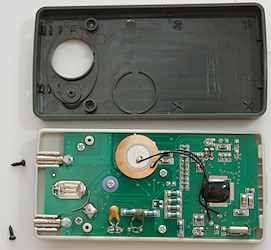
Two screws and the back could be removed.
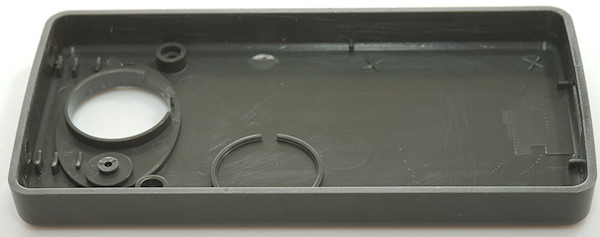
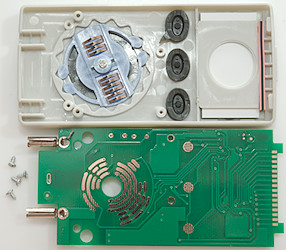
A few more screws and the circuit board could be removed.

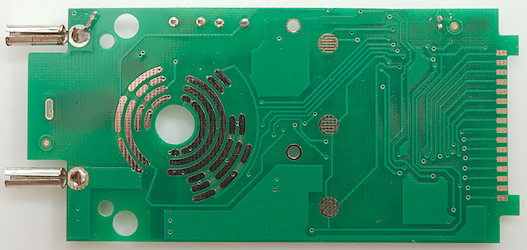
On this side there is only the switches and connections to the display.
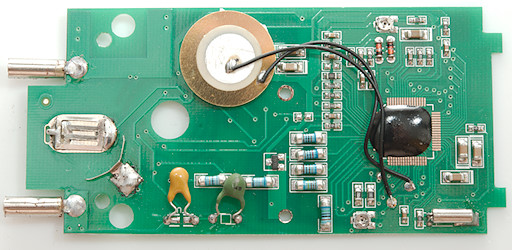
The yellow part is a PTC to protect the current ranges, the green part is probably a PTC to protect the ohms range. The resistors below the green part is the current sense resistors (100ohm & 1ohm).
The MELF (Round resistor) resistors near the trimpot is a 10Mohm input resistor, the other MELF resistors is used for the different ranges.
Below the buzzer is a hidden number printed on the circuit board XT9210 and a data 20170222 .
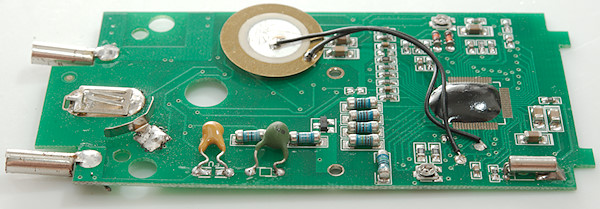
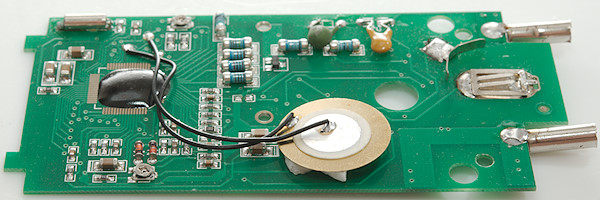
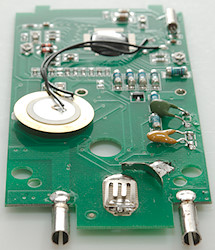
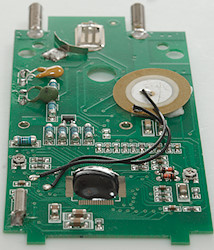

Conclusion
This is a very compact multimeter with many of the common DMM functions, but it is missing ampere, frequency, capacitance and temperature. The precision is not as good as promised and my meter has a problem with measuring 230VAC. The safety with the probes is also questionable.
The PTC protection on the current range is a very big advantage, no blown fuse or meter due to small mistakes.
I would not recommend this meter for mains measurement or precision measurements, but for checking something on the bench or in a car it is acceptable.
Notes
This meter probably exist with many different names on it and small variations in functions.
How do I review a DMM
More DMM reviews
 : Resistance range
: Resistance range
 : Diode and Continuity.
: Diode and Continuity.















 : Resistance range
: Resistance range
 : Diode and Continuity.
: Diode and Continuity.












